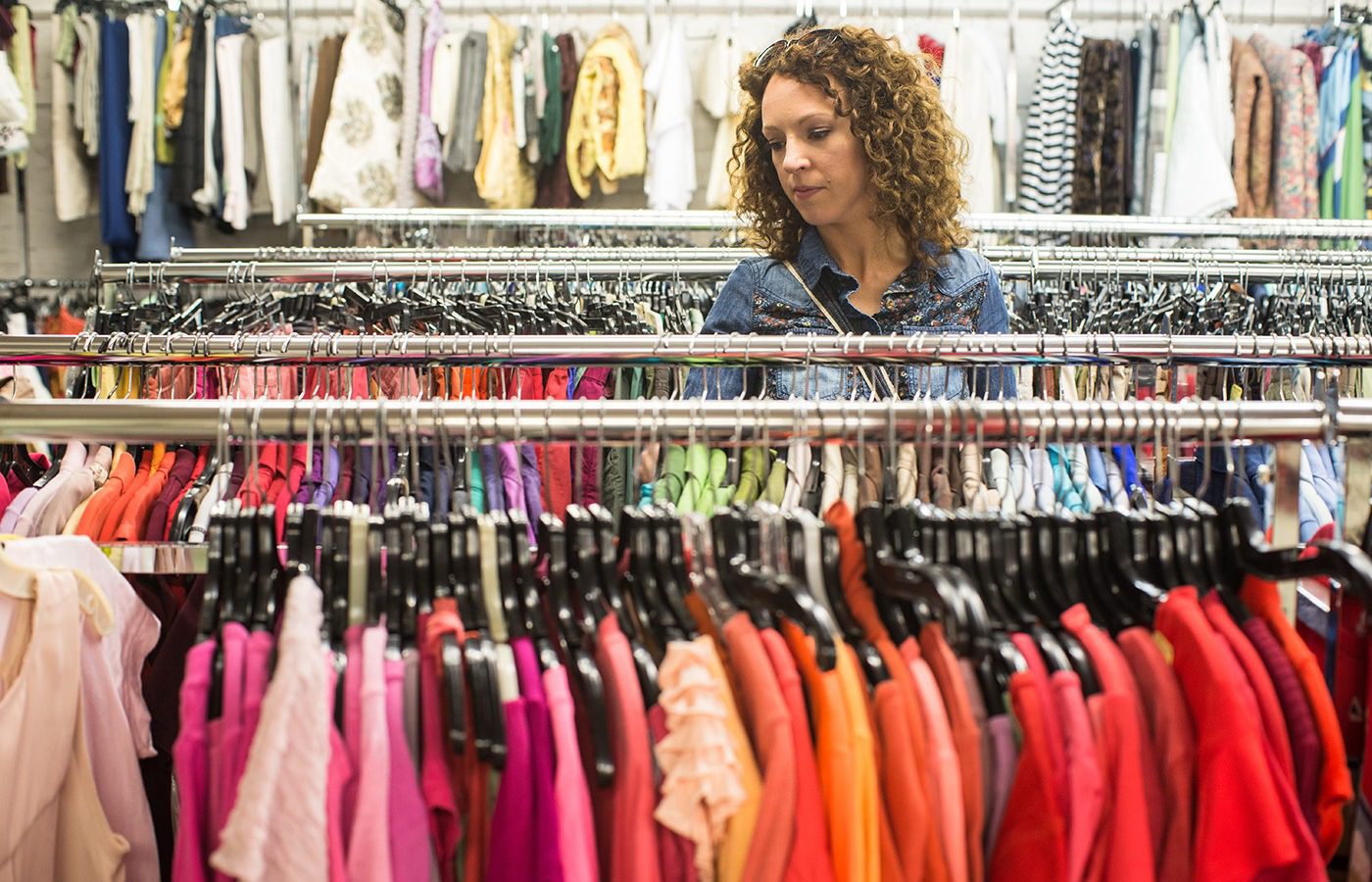Dreading the cost of having to buy our 18-year-old daughter a prom dress, we were delighted when she found the perfect dress at a second hand clothing store for only $80! For our daughter and millions of other teens, thrifting is a regular habit and something she considers part of her identity. Enter the increasingly popular world of second hand fashion.
I was surprised to learn that fashion is the second most polluting industry, second only to oil. No wonder consumers have taken active steps to become more sustainable. This includes buying fewer “fast fashion” items, buying from smaller, more eco-friendly fashion companies, and demanding more sustainable options from brands.
During the pandemic, the fashion industry took a big hit. Retail giants filed for bankruptcy, independent brands closed, and brick-and-mortar stores either went bankrupt or faced lengthy financial recovery from the months they were forced to stay closed. The resale industry, conversely, saw huge growth.
Online consignment platforms and second hand retailers had already been seeing growth even before the pandemic. Over the past three years, reselling and thrifting has grown 21 times faster than the actual apparel retail market, which means that there are more secondhand shoppers than ever before. A fashion report from ThredUp shows that the global secondhand market is expected to practically double by 2027, reaching $350 billion!
It’s good news for the planet that second hand clothing is becoming a mainstream concept. It reduces energy and water used as well as reducing C02 emissions. As far as the consumer is concerned, second hand is often a great way to express personal style and support a more sustainable lifestyle overall.
Consumers are embracing second hand shopping against a backdrop of increased awareness of sustainability and rising living costs. Online retailers such as Vinted, eBay and DePop have become extremely popular, attracting consumers that want to buy ‘new’ items while also making more sustainable choices. The result is that second hand shopping is becoming much more accepted. Even celebrity influencers are being encouraged to shop second-hand.
Large established retailers are getting in on the action too. M&S, Primark and H&M are all running recycling programs. Some have even gone as far as to sell second hand clothing in their stores as retailer ASDA has done in their “George” section. Patagonia’s notable “Worn Wear” program was founded in 2013 and has expanded to include standalone physical stores in addition to its web presence.
The resale and second hand clothing market was made even more appealing by promoting it as a good cause. Goodwill and the Salvation Army both advertise their businesses as promoting social well-being. Both use the profits from the resale of salvaged goods to create social programs. In this way, thrift stores continue to make important contributions to the community.
Other factors that are contributing to the shift to thrift include convenience, sustainability, and affordability – three things that are very appealing to college kids. Gen Z and millennials are interested in helping the environment and reducing waste. Studies have found that 77 percent of millennials prefer to buy clothing that helps the environment.
Usually buying sustainable means paying more, but not so with clothing. Consumers can buy more without feeling guilty about it while at the same time get that fashion fix. What does this mean for the future of fashion? In the US the second hand clothing market has expanded 21 times faster than the traditional fast fashion market, and this is expected to grow significantly. While fast fashion will likely continue to grow, second hand offers a massive opportunity for the fashion industry to respond and reshape.
For example, clothes now need to be designed with resale and repair in mind, with circularity built in from the very start. This work requires an understanding of consumer behavior and considerable sustainability research. The changes will be characterized by shifting away from quick ‘pop’ fashion hits when it comes to design and using fabrics and trims that will last multiple wears and owners. In short, longevity and quality will become much more important and expected.
Given recent inflationary pressures and sustainability concerns, from a consumer perspective, the thrift market shows no signs of slowing down. However, it remains to be seen if the resale-at-scale model is the best way to reduce waste in the industry. The key issue is about complementing re-using with reducing the supply of new. Unless the focus is fully on the latter, can we be sure of how sustainable the industry will become?


